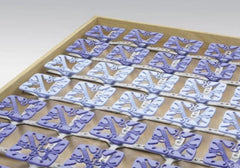CONTACT US

How to Keep Your Total Composites Camper Moisture-Free: A Complete Owner's Guide
As winter's chill descends and truck camper enthusiasts gear up for frosty adventures, the cozy promise of warmth can be quickly dampened – quite literally. Despite the innovative design of Total Composites (TC) campers, a few users have reported interior moisture issues, challenging our "condensation-free" claim. This blog post is a deep dive into how to prevent and manage moisture build-up in your TC camper, ensuring that a droplet of doubt never tarnishes your camping experience.
Moisture control inside your camper is not only about comfort but also about preventing damage to your vehicle over time. Understanding the principles behind condensation and taking proactive steps can preserve your camper's integrity, comfort, and resale value.
The Scientific Perspective: How Condensation Forms
Condensation is the transformation of a gas to a liquid state when it comes into contact with a cooler surface. In the context of a camper, this typically occurs when warm, moist air from activities like cooking, showering, and even breathing contacts the colder interior surfaces, creating pockets of condensation in areas with limited airflow.
The key to preventing this is to monitor surface temperatures and ensure

adequate ventilation. If a surface falls below the dew point – the temperature at which air becomes saturated and condensation occurs – water will begin to form. This point varies with the humidity and temperature inside your camper but is easily calculable using dew point calculation tools.
Understanding this principle, we'll now explore practical strategies to maintain a dry camper.
Best Practices for Moisture Management
Interior Design Considerations
TC campers are designed with excellent structural insulation to limit thermal transfer, but certain interior modifications could inadvertently disrupt the insulation's efficacy, leading to temperature differentials along the walls and ceiling. These variations can create perfect conditions for condensation.
-
Insulation Placement: Any insulation in direct contact with the camper's exterior walls acts as a thermal barrier. Instead, ensure there's airflow between surfaces by not overstuffing storage areas, keeping interior walls clear, and avoiding any material that might trap moisture.
-
Furniture and Fittings: Physical barriers like tightly-fitted mattresses, snug seat cushions, and closed storage areas can impede airflow, contributing to trapped moisture.
Heating Solutions
Your choice of heating can significantly affect interior moisture levels. Not all heating sources are created equal when it comes to dehumidification.
-
Dry Heating: Diesel heaters that recirculate interior air provide dry heat, which is ideal for moisture control. Ensure the warm air reaches potential condensation areas, especially those prone to trapping moisture, like storage compartments.
-
Dew-Point Strategy: Keeping your camper's interior temperature above the calculated dew point can effectively prevent condensation. Resist the temptation to use overly insulating bedding or tight-sealing window covers that can shield surfaces from warming air.
Ventilation and Airflow
Proper ventilation is the single most effective way to keep your camper dry, facilitating the exchange of humid air for drier external air.
-
Cross Ventilation: Opening windows and creating a breeze can significantly reduce moisture build-up. Portable fans, strategically placed, can enhance the circulation of air throughout the camper.
-
Avoid Dead Air Spaces: Any area without proper airflow can become a pocket for stagnant, moist air. Be mindful of designing your interior to promote air movement, ensuring no section remains unventilated for extended periods.
Tactical Additions to Enhance Your Moisture Defense
Aside from the intrinsic design elements of your TC camper, there are several practical and aftermarket add-ons that can aid in moisture management.
The Froli System

The Froli Sleep System, a thoughtful addition to your bedding, supports air circulation under your mattress, effectively preventing moisture from collecting at this common singularity problem area.
Window treatments
Light, insulating curtains can help isolate the inherent cold points – windows – and guide moisture condensation to an easily observed and managed area. Heavy curtains beyond aesthetic value potentially trap moist air and require consideration in your dew point management.
Mechanical Ventilation

While not a personal favorite, some campers prefer the assurance of mechanical roof-mounted vent fans. Choose high-quality, durable models with a good track record that don't encroach on your camper’s overall profile.
Camper Interiors
Elements like wood may inadvertently contribute to moisture retention. Seal or varnish wood to limit its vapour permeability, reducing the risk of becoming a condensation site.
Conclusion: Achieving the Promise of a Moisture-Free Camper
While no solution is a panacea, the cumulative effect of these strategies – an amalgamation of design considerations, heating choices, ventilation practices, and tactical enhancements – will secure the promise of a dry and comfortable camper. Understanding the science behind condensation, staying informed about your camper's unique vulnerabilities, and vigilantly adopting best practices will ensure that every journey in your TC camper is a moisture-free memory in the making.
Remember, your Total Composites camper is a meticulously engineered and crafted space, airtight under normal circumstances, which is a great asset under most camping scenarios. However, the delicate thermal dance that is moisture management requires your active participation. By implementing the suggestions in this blog post, you’ll not only keep your TC camper comfortably dry but also maintain its structural integrity and your peace of mind.
Join the Discussion
We invite the Total Composites community to join us in the quest for a condensation-free camper. Share your stories, insights, and questions in the comments section below, and let's engage in a valuable, moisture-minimizing discourse. Together, we can ensure that camper enthusiasts across the globe are equipped with the knowledge and tools to combat condensation effectively and enjoy the great outdoors without a watery obstacle in sight. Keep dry and carry on camping!
